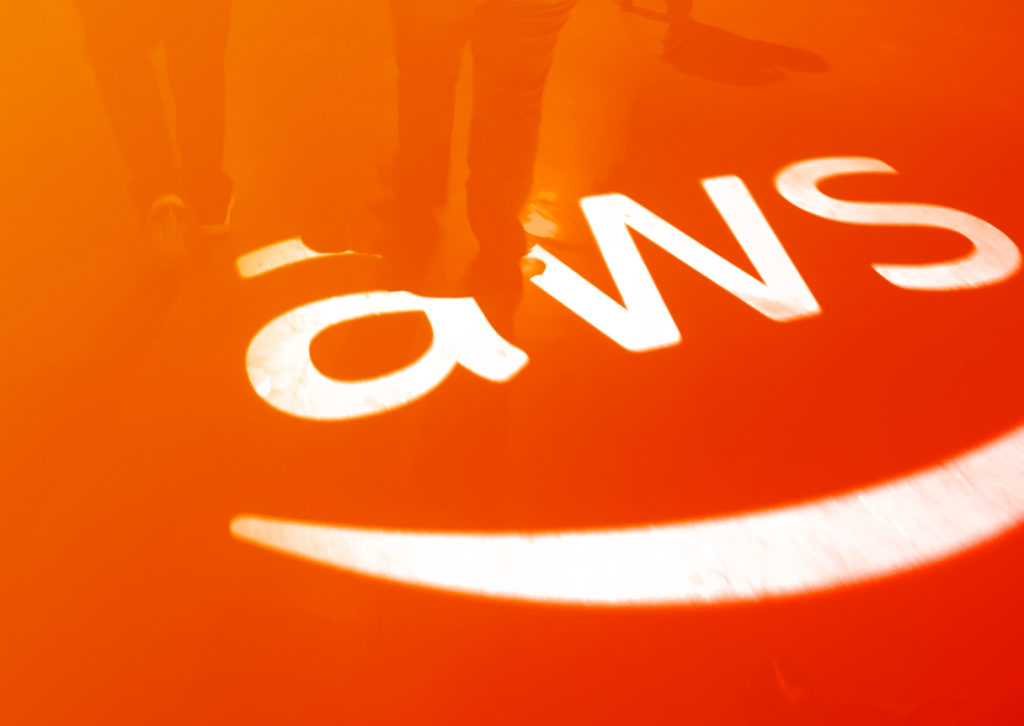Your fancy equipment may make the cut, but will your website? Here’s how to make better websites for manufacturing companies.
What Makes Your Manufacturing Website Different?
Websites built for manufacturing companies are different from most other websites in three distinct areas:
Brand Storytelling
You’ve probably considered using your website to showcase what you make. But you must resist the temptation to build an online brochure. Your website should be so much more than that.
Here’s the big takeaway: no one cares what widgets you produce. They care about why you produce them. So if your website doesn’t convey a story, you’ll just blend in with the crowd.
Let’s start with an example of a good manufacturer with bad storytelling. Intersan manufactures high-quality commercial plumbing fixtures, but the website is too hasty to push products.
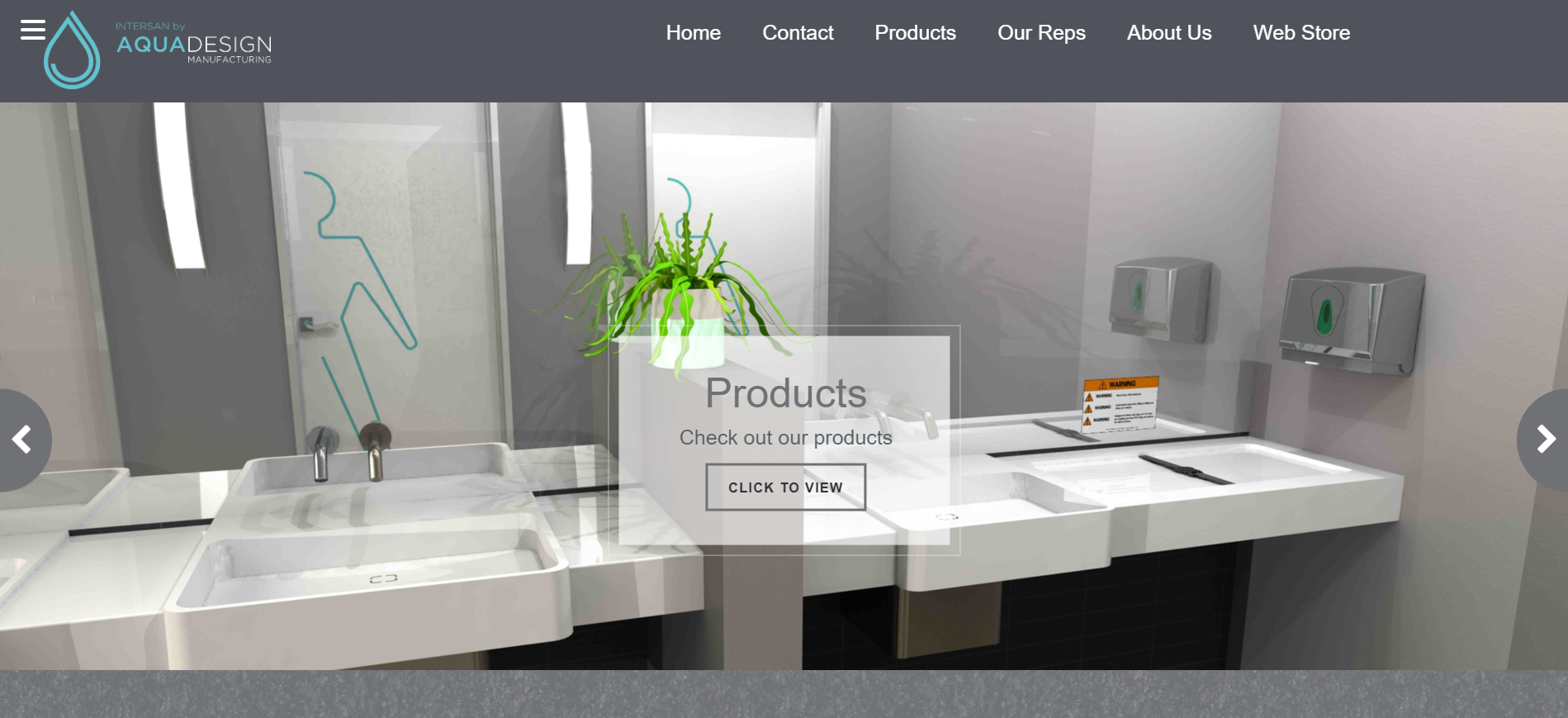
The problem is not the “products” button–an immediate button linking to another page is often a good thing. The problem is that Intersan is trying to sell the sinks before it sells the story. Other websites with “View Products” buttons tell you what the company is all about first, but this home page does not tell you anything about Intsersan. Does Intersan manufacture sinks or does it create bathroom floorplans? The homepage is not immediately clear.
But if you scroll down a bit, you get an answer.
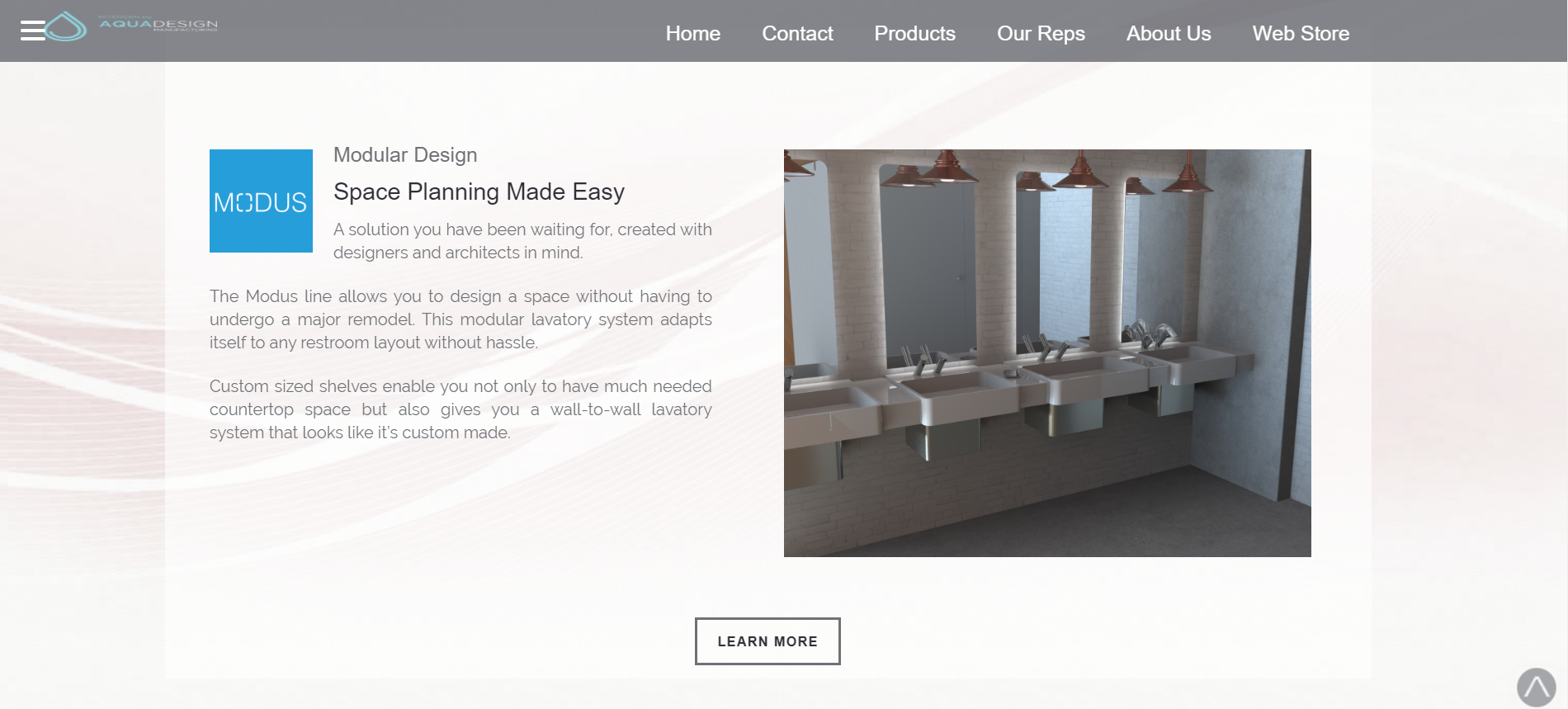
Aha! They design and manufacture sinks! Why didn’t they say so earlier? A simple hero message at the top would have made it abundantly clear.
Storytelling is the difference between a boring or confusing product list and a stunning website. If you can get the storytelling right, your website will truly stand out. For instance, Acme Lift Company kills two birds with one stone: it features products and tells a compelling brand story.
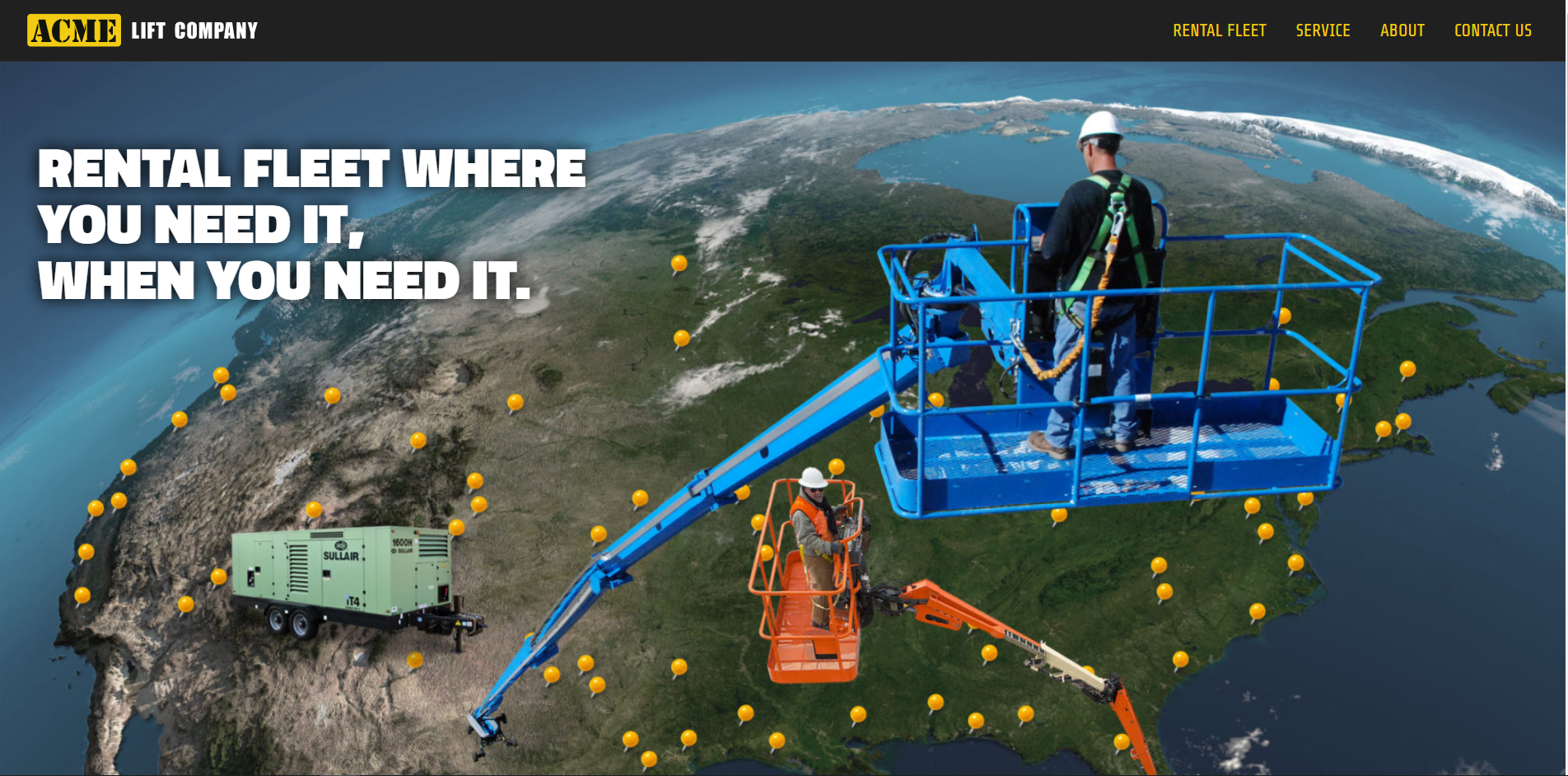
Granted, it’s a rental company, not a manufacturing company, but the goal is still to showcase a high-quality product. Besides, it’s partially owned by a manufacturing company, so Acme’s website goals run parallel to your own. What makes the website design so great is that it immediately shows what they do and why they do it. It tells an important brand story that converts into sales. Here’s the most important goal for your website: be more than what you manufacture, and show that brand story in every pixel of your website.
Audience
While every company should evaluate its target audience, manufacturing companies need to take special care to get it right. Since manufacturing is such a broad industry, you need to focus on what makes your customers different. Do you sell widgets to engineers? A list of specs alongside each product may be extremely appropriate. However, if those same widgets are sold to consumers, the entire focus of the website will change.
Plus, not every manufacturing company will sell widgets. A purchasing manager at a grocery store won’t look for the same things as a purchasing manager at a department store. Every single customer you want to attract will look for something completely different. So failing to understand every facet of that audience will harm you.
In fact, your company may have multiple audiences–especially if you run a large enterprise. Consider The Clorox Company. The primary Clorox Company Website is clearly targeted toward investors, and that comes across in the friendly page design. For instance, when the page first loads, you aren’t greeted with high-definition images of chemical plants. Instead, you’re greeted with ambiguous blog posts about innovation and sustainability.
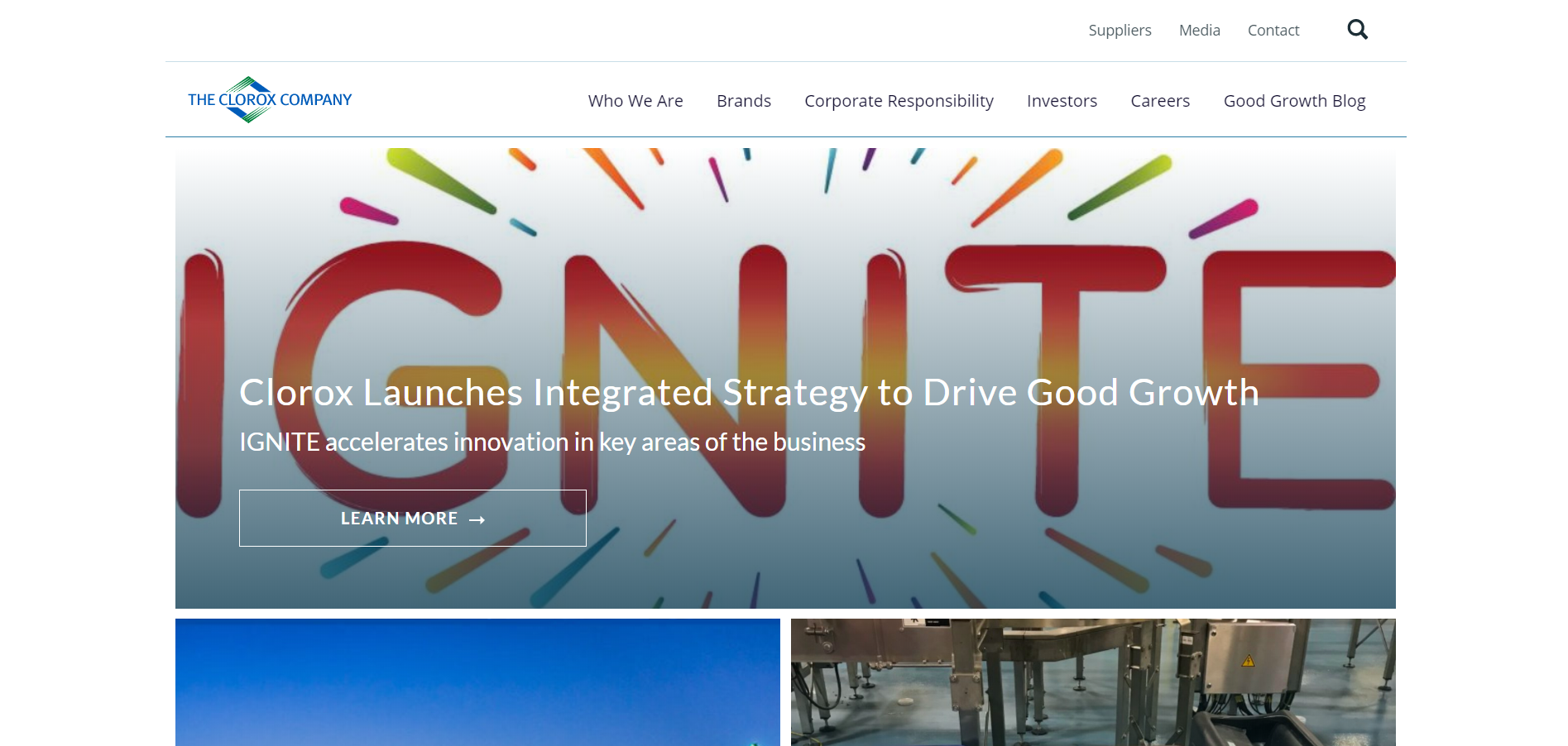
If that weren’t enough, there’s an “investors” tab.
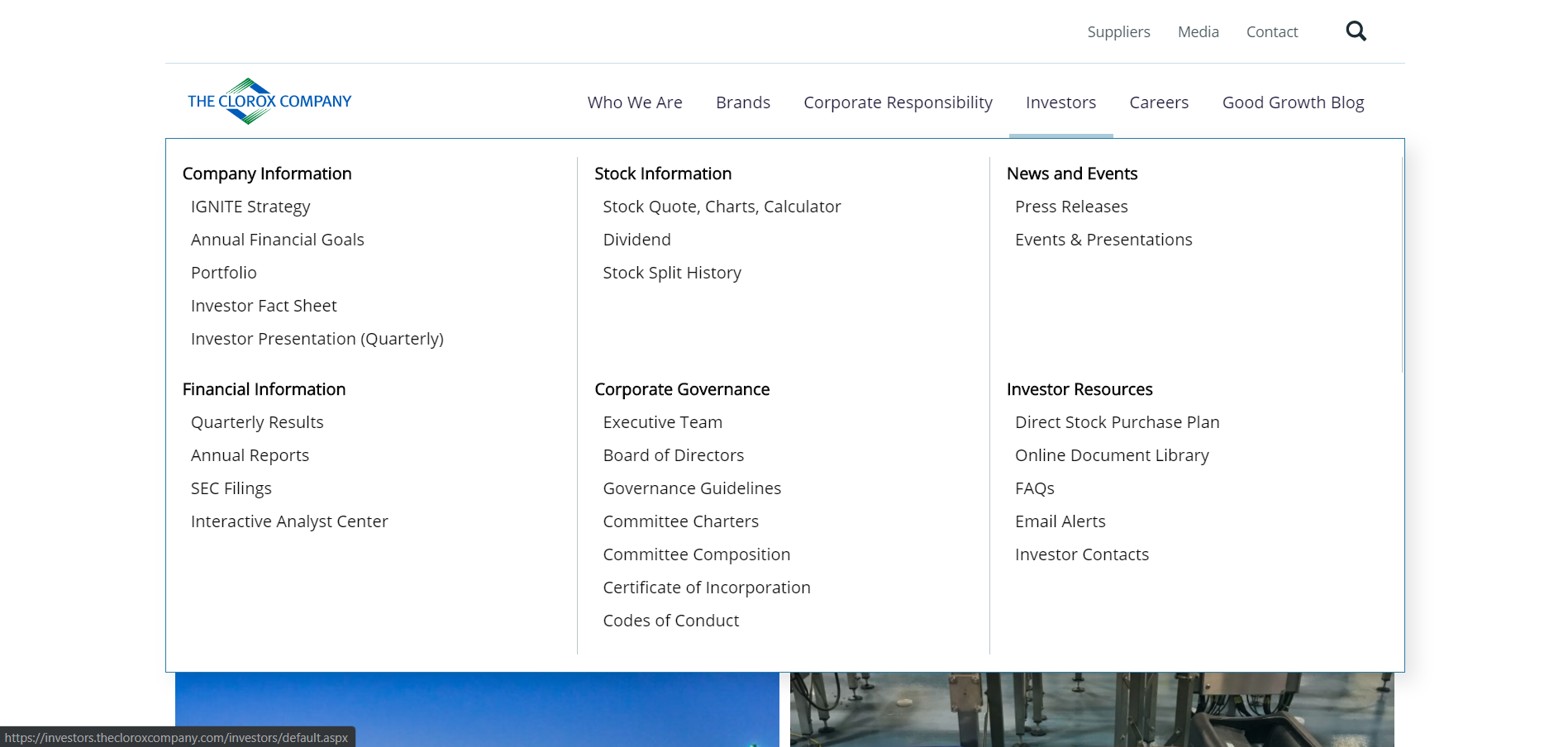
However, investors aren’t the company’s only audience. For comparison, take a look at the Clorox Brand website.
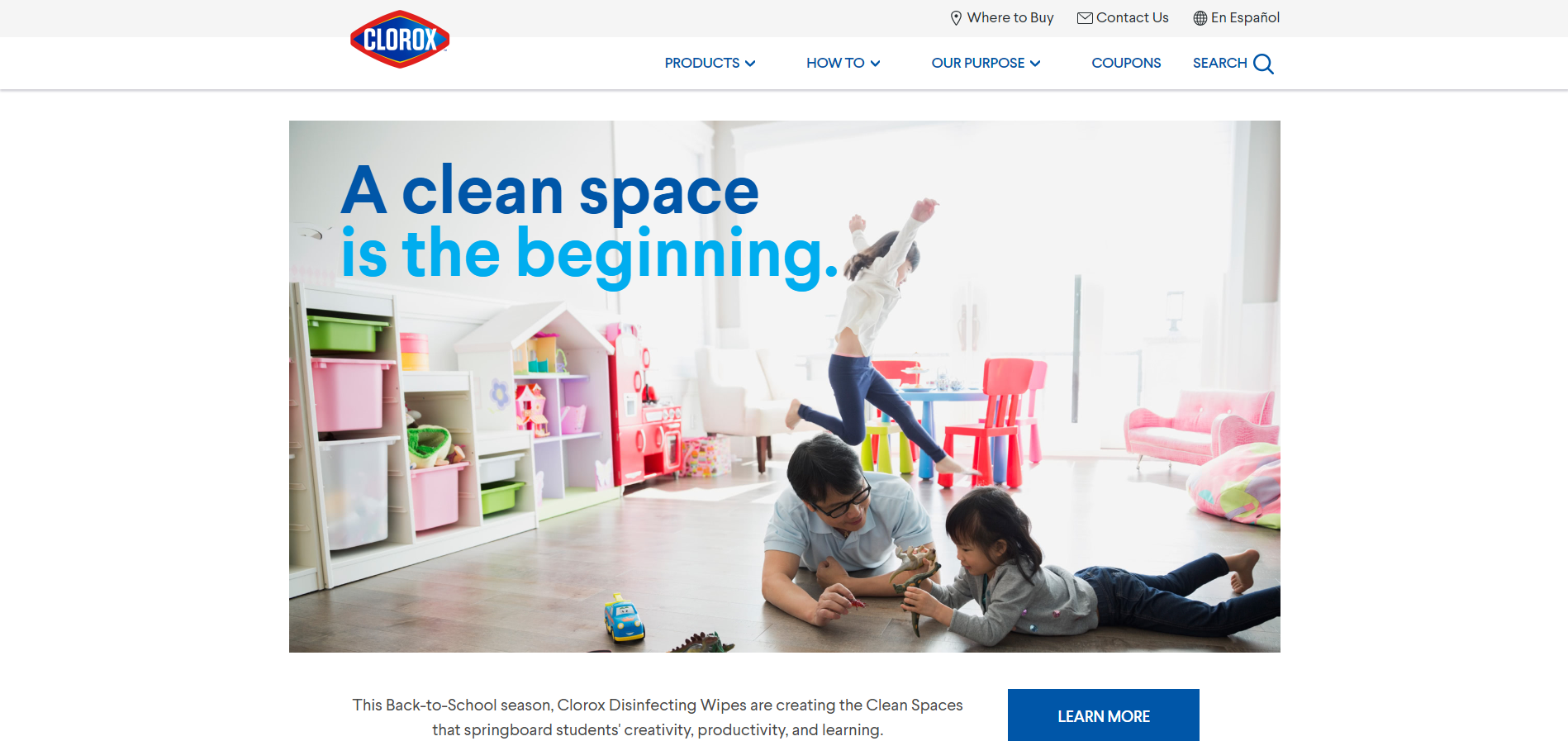
This website is much more focused on cleanliness. Instead of appealing to investors, it appeals to consumers and their desire for cleanliness. Most companies don’t need multiple websites. While the Clorox Company needs the main website for investors and an individual website for each brand, an individual manufacturing company likely only needs one. However, Clorox does illustrate a very important point about audiences: they define your website. Do not build a website before you define every aspect of your audience.
Mobile Traffic
Many manufacturing companies fervently argue that mobile support isn’t important. After all, most statistics suggest that manufacturing companies don’t reap as many benefits as other companies. Throughout the industry, mobile clickthrough rates are average, conversion rates are low, and desktop traffic is higher than average. These numbers lead too many people to the erroneous conclusion that websites designed for manufacturing companies don’t need responsive design.
These statistics are correct, but they fail to capture the whole picture. Sure, mobile web traffic in the manufacturing industry is below average, but the average across industries is extremely high. In fact, almost every single industry experiences more mobile traffic than desktop–even the ones that are below average. The only industries with more desktop traffic than mobile traffic are the Finance and Art/Entertainment industries.
Plus, depending on what you manufacture, your company may experience higher than average mobile traffic. Do you manufacture cars? More than 64% of the automotive industry’s traffic is mobile. Do you sell most of your manufactured goods to other businesses instead of directly to consumers? About 60% of your traffic will be mobile. Even if you manufacture electronics, which historically has mostly desktop traffic–half of your website visitors will be using their smartphone. Most importantly, mobile traffic is growing, so if your industry has more desktop traffic now, it probably won’t by the end of the year. Don’t trick yourself into building a bad website. Make it future proof.
Examples
Do you still think responsive design isn’t right for you? So did CAT. While the CAT website is praised on blogs across the internet as one of the best manufacturing websites, it could use some work. On mobile devices, some buttons cover text boxes. It functions, but not as well as it should.
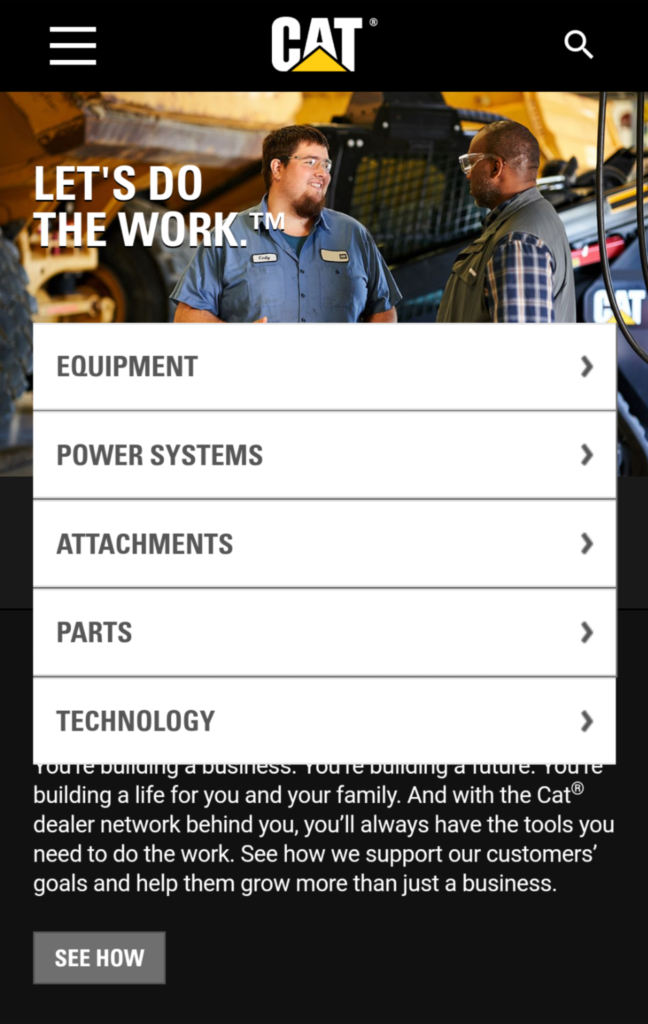
Even the desktop version needs improvement. The website does not cover the full width of the screen. That’s a problem.
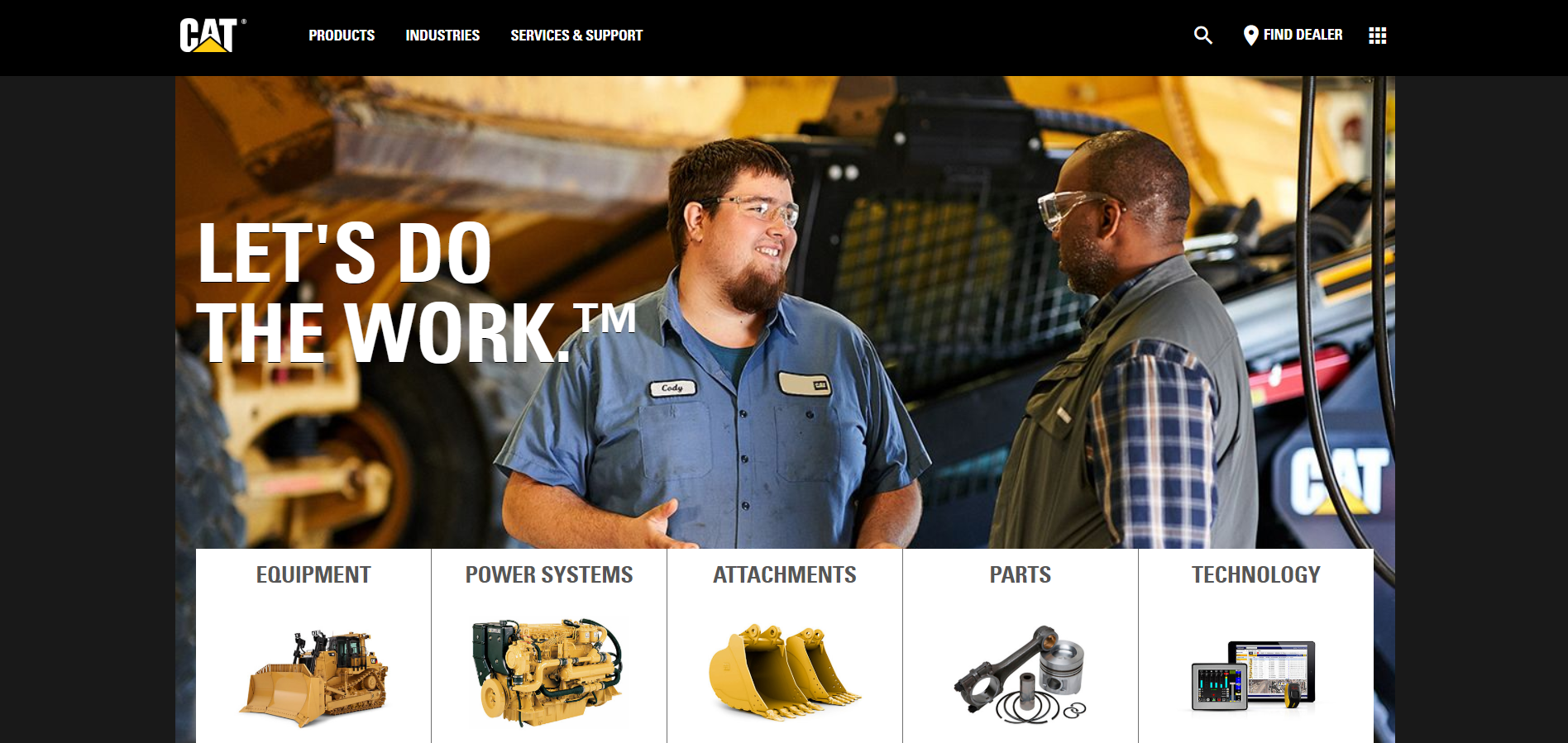
CAT isn’t all bad. The copy, images, and visual storytelling are all wonderful, but the layout needs work. Somehow, it looks out of place on both mobile and desktop devices. Don’t be like CAT. Use responsive design. For comparison, take a look at modular mining.
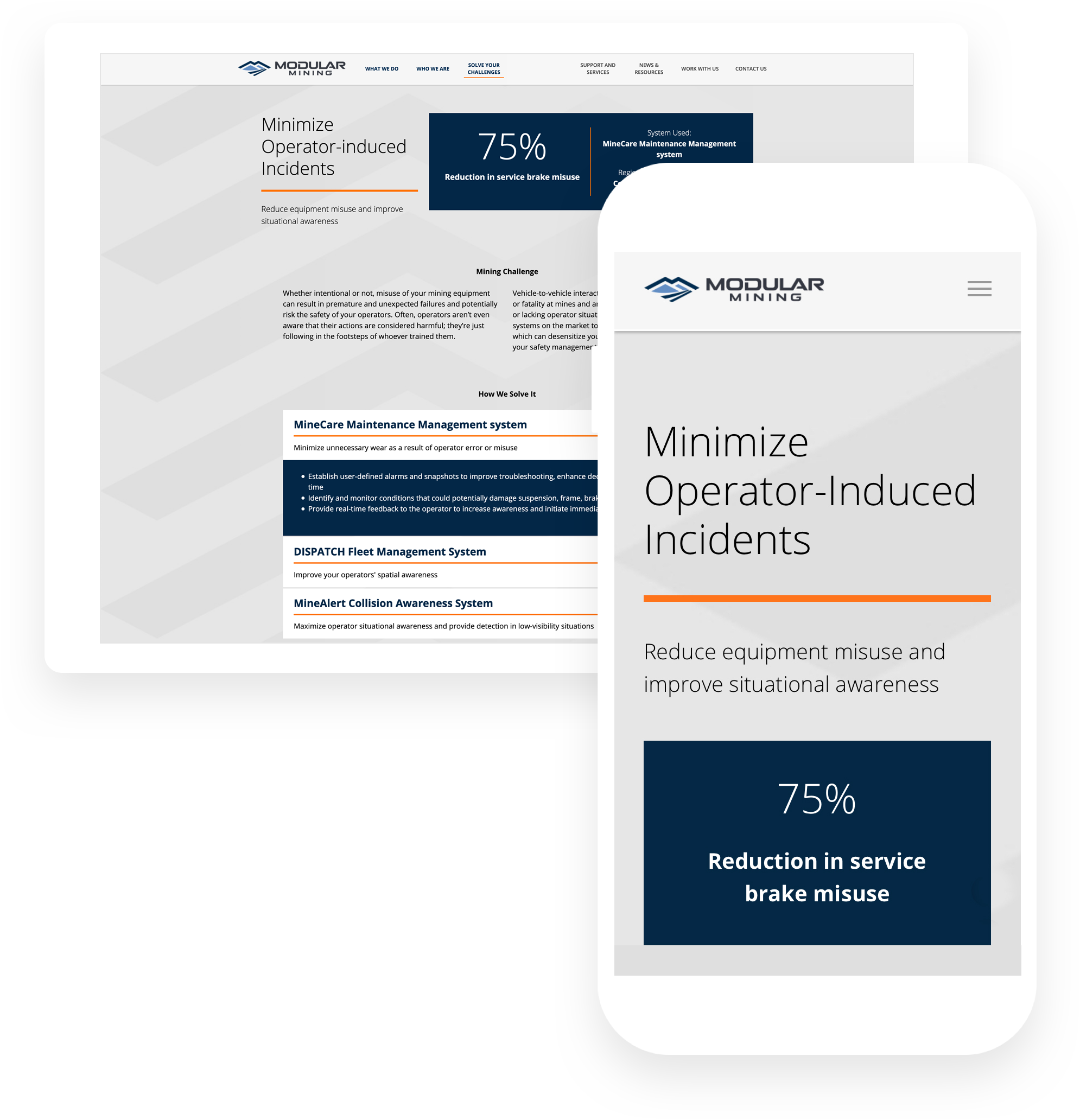
This website was designed for mobile and looks great on desktop platforms. It fills the entire width, and text boxes are all readable.
Similarly, check out the Acme Lift Company website.
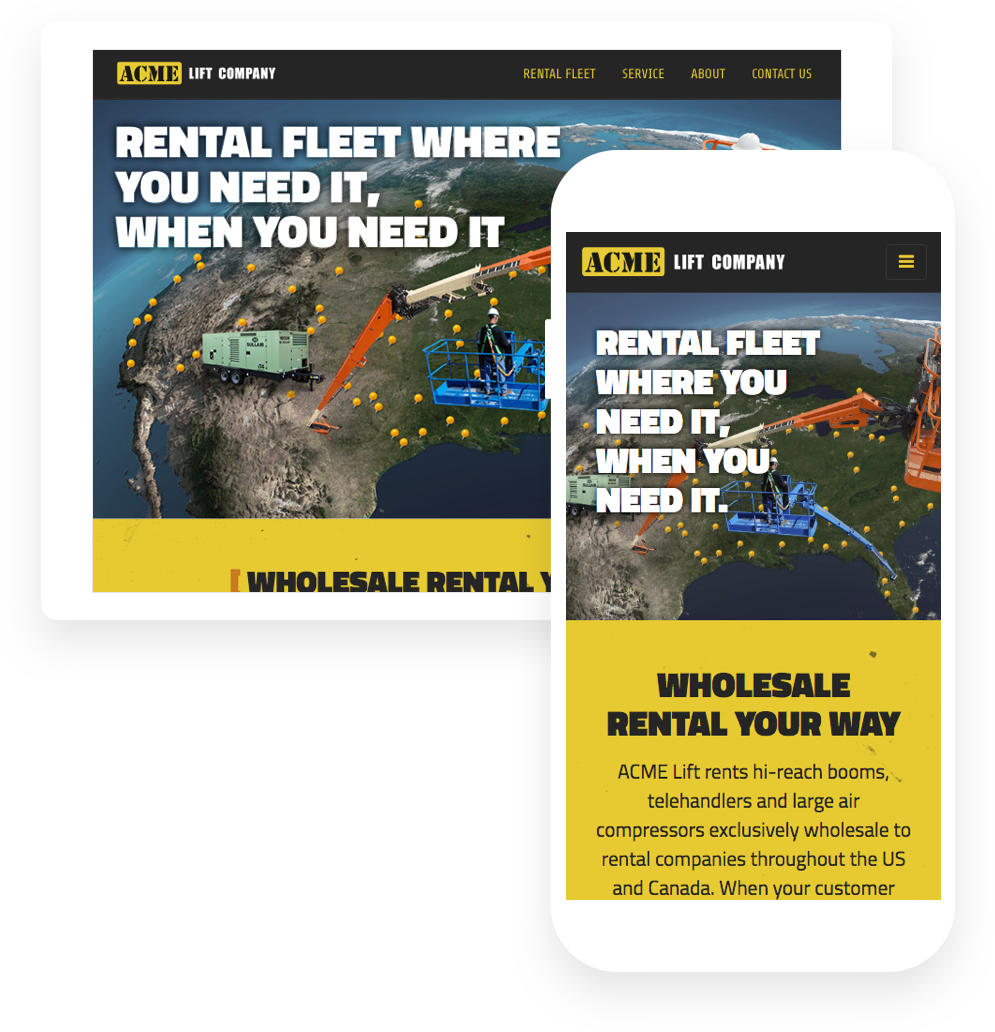
Like Modular Mining, Acme Lift Company features original responsive design. Unlike CAT, it fills the entire width on desktop platforms and fully functions on mobile platforms. No matter how unimportant mobile traffic seems, it grows ever more important each year. If you’re building a new website, make it future proof.
Getting Started
What Is Our Budget?
No matter what, every project should start with a discussion about the budget. The size of your budget is perhaps the most important variable for determining project scope, so if you don’t evaluate your budget effectively, you won’t be able to get anything off the ground. Your budget is the difference between hiring a professional agency to build a custom multi-page masterpiece throwing together an impromptu website on an online builder the night before a major trade show. Evaluate your budget very thoroughly before you begin.
When Do We Need This Website?
Do you have a conference or a trade show on the calendar? Don’t ask a developer to make a website two weeks before. Making websites for manufacturing companies takes lots of time and care–the design phase alone takes a few weeks. If you want to show off some fancy new tech or machinery at a major event, meet with a web development team ASAP! If you don’t have much time, don’t expect a ton of pages or functionality. However, if you have lots of time, you also have lots of freedom. The timeline makes a huge difference, so talk to your developers and set concrete goals.
Who Is Our Audience?
We said it before and we will say it again: research your audience! Every manufacturing company has drastically different customers. Don’t chase a nonexistent customer base when the perfect one is right under your nose. Take some time to evaluate your customers and learn what they want. For more information on customer evaluation, read our post on product-market fit.
What Custom Features Do We Need?
The features your website needs are directly tied to your target audience. Before you set your mind on adding tons of custom functionality, use your audience to set goals. Is your goal to generate leads? Add an email capture feature. Is your goal to sell your products online? Add an eCommerce platform. But don’t add functionality that you don’t need. You’ll end up spending too much money and waiting too long for a bloated website. If you want a high-quality website with the highest possible ROI, spend some time to figure out which functions are essential and which can go.
Building new websites for manufacturing companies is a huge step in the growth of your company, so make sure you do it the right way. Take some time to evaluate your needs and look for the development partner that best reflects those requirements. To get started building a stunning human-focused website, contact us online or call us at 888.221.6509.
 Paul A
Paul A 


